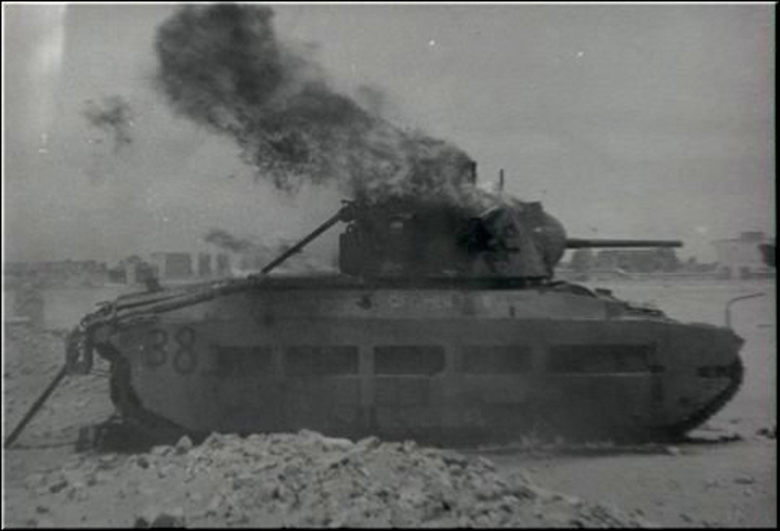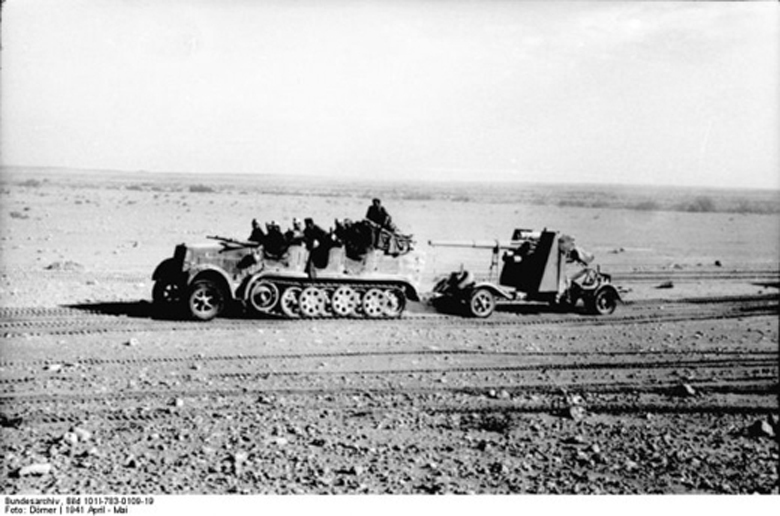Battle of the Atlantic
The German supply ship Lothringen (10,746t) is captured by the British cruiser Dunedin. Once again, secret documents fall into British hands. By this time, Britain has captured vital documents and machinery for deciphering German secret codes, which is unknown to the Germans. The ship is renamed Empire Salvage for British use.
[Mediterranean
The Vichy destroyer Chavalier Paul, carrying ammunition to Syria, is sunk by British torpedo-bombers.
[North Africa
A major British offensive, Operation BATTLEAXE, begins. The aim is to relieve Tobruk. Wavell is still reluctant to attack, largely because the tanks which recently arrived on the Tiger convoy have had many mechanical faults and the time taken for repairs means that the troops have had a very short training period.
Although the 2 divs involved, 4th Indian and 7th Armored, are both experienced formations, they are not at full strength and have been further weakened by changes in command. Gen Beresford-Pierse is in charge of the attack.
Three columns are sent forward, one to Halfaya Pass, one to Capuzzo along the edge of the escarpment and one inland to Hafid Ridge which is west of Fort Capuzzo. The attack of Matilda tanks is beaten off at Halfaya by the emplaced 88's, and without tank support the infantry units there can achieve nothing. A force of lighter cruiser tanks similarly loses heavily at Hafid Ridge. By evening some success is achieved as the British take Fort Capuzzo and the fortified position on the Hafid Ridge known as Hill 208.
The German radio intelligence gives them excellent tactical information and their dispositions of 5th Light forward and 15th Pzr watching Tobruk are more than adequate. On the whole Rommel is content to defend on the first day and, indeed, by the end of the day the British tank losses already leave them at a disadvantage.
|
|
The 88 was usually towed by a prime mover, and had to be unhitched and the cruciform stand anchored in place. With an experienced crew this could be acheived fairly fast. However, in more desperate encounters the 88 could be fired without removing it from its wheeled carriage by locking the rear wheels with the hand brakes. In most cases the 88 was well dug into the desert for its own protection, and disengagement and recovery of the gun would be very difficult in these cases.
While on the move it was easy prey to both aircraft, artillery strikes and naturally to enemy armor encounters, so it had to be deployed wisely. There were simply never enough 88s to meet the demands, and as the war in Russia picked up they became even scarcer for Rommel in Africa. There was also a demand for them to defend Axis airfields and garrisons from British bombing attacks in the desert, so they were spread pretty thinly.
[Syria
A counterattack by the Vichy forces succeeds in retaking part of the town of Marjayoun and some nearby positions. However, both to the west on the coast, where Sidon is taken, and to the east in the approaches to Damascus, where Kiswe falls, the Allied advance is still going well.
[
